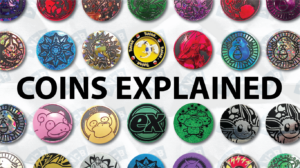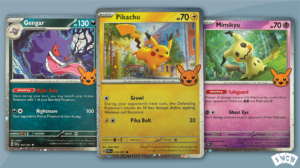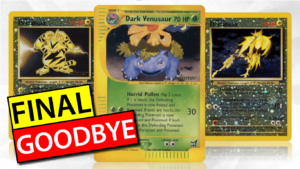3 Ways Experts Organize Pokémon Cards in Binders
-
By: Oliver Copeland
- Published:
- Last Updated: February 7, 2024
Due to the design nature of Pokémon cards, they can actually be organized in a variety of ways. For collectors, it is most common to organize by set number, but organizing by rarity or type has its benefits too. By the end of this guide, you will know exactly how to organize your cards.
What You’ll Need to Get Started
Binders are used to store cards in an organized and visually pleasing way. They also offer very good protection for your cards.
Card sleeves are like individual plastic pockets for your cards. They protect against light abrasive forces on the face, and especially the corners and edges.
There are thousands of different Pokémon cards. You’ll need access to Google to make sure you can identify each card you own for later categorization.
Binders
A binder is going to be the first and most important item for organizing cards. If you don’t already own one, there are plenty of binder-buying guides around the internet and on YouTube. Here are a few of our favorite binders:
Binders with a spine and side-loaded pockets are best for cards. 3-ring binders are not recommended for storing cards, and the rings can cause damage referred to as ‘binder dings’.
Top loader binders have larger pockets designed for top loaders, instead of just sleeved cards. These offer more protection than regular binders but are more expensive and much heavier.
Sleeves
It is best practice to first sleeve your cards before inserting them into the binder pockets. This has two benefits: the sleeves help hold the cards in place, preventing them from shifting or falling out, and they also protect the edges and corners when the cards are being removed/inserted into the pockets.
Here are some sleeves we recommend for Pokémon cards:
- Dragon Shield (Link to Amazon)
- Dragon Shield Resealable (Link to Amazon) (Inner sleeve)
- Ultra Pro (Link to Amazon)
- Ultra Pro Pro Fit (Link to Amazon) (Inner sleeve)
'Double sleeving' is the practice of using two different sized sleeves, one smaller and one larger, to add an extra layer of protection.
Reference Material
You’ll need reference material if you want to organize your cards by set number, or even rarity. Few collectors have actually memorized all of the set symbols, so you’ll need to identify which symbols belong to which expansion set.
Here are some great sites to use:
3 Ways to Organize Pokémon Cards in a Binder
There are 3 main methods of organizing Pokémon cards in a binder.
- By card number
- By rarity
- By type
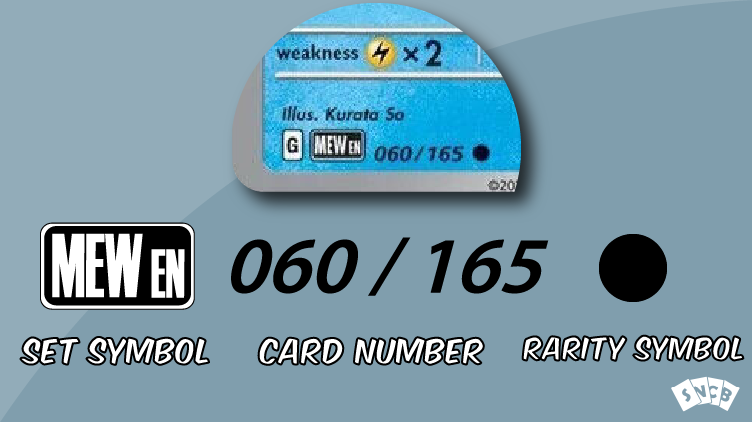
There are other ways to organize cards, and everyone is going to experiment sometime. But the above listed make the most sense from a collector’s standpoint. Let’s dive in!
1. Organize by Card Number
Pros: Numerical order is easy, spaces can be left for missing cards, and sets will be organized chronologically.
Cons: Rare cards will be at the back, missing cards result in empty pockets and can leave the binder feeling empty.
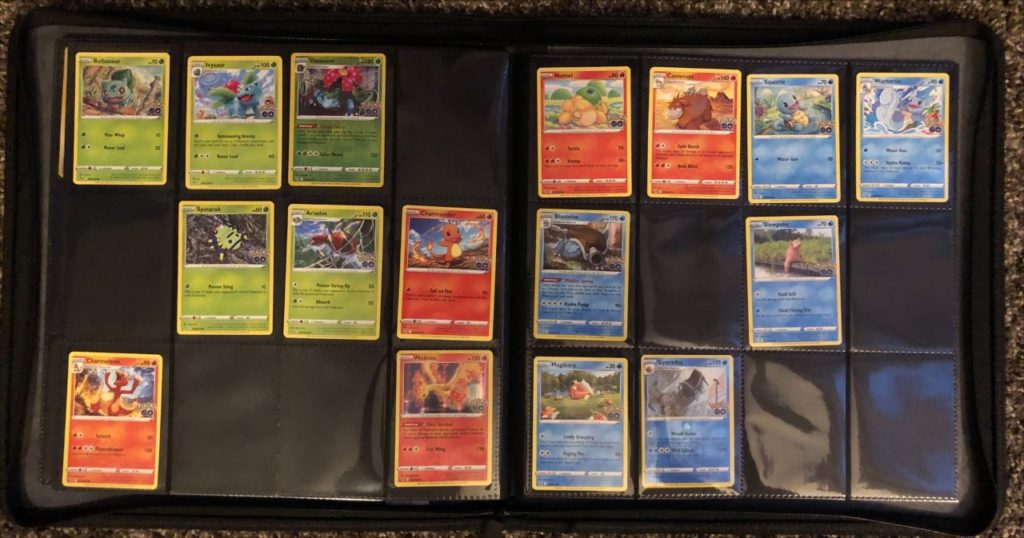
STEP 1 – Identify the expansion set
Every Pokémon card is going to have a set symbol somewhere. Cards from the WotC era are going to have it outside the lower-right corner of the illustration box.
Modern cards will have the symbol on the bottom left or bottom right of the card. Being able to identify the symbol and categorize the symbols together will essentially result in your cards being organized into sets.
But you can’t Google a symbol, so what next?
Try Google searching the name of the card followed by the numbers at the bottom. For example, ‘Charizard 025/185′. This will yield results for the Charizard from the set Sword & Shield- Vivid Voltage. At this point, you will now have the set symbol and the name of the set that it belongs to.
STEP 2- Find the setlist
Next, you’ll need to find a list of all of the cards from the set. In this case, you would Google something like “Vivid Voltage setlist” to obtain a list of every card from the Vivid Voltage expansion. Of course, you don’t need this setlist, but it will help identify the cards that you are missing.
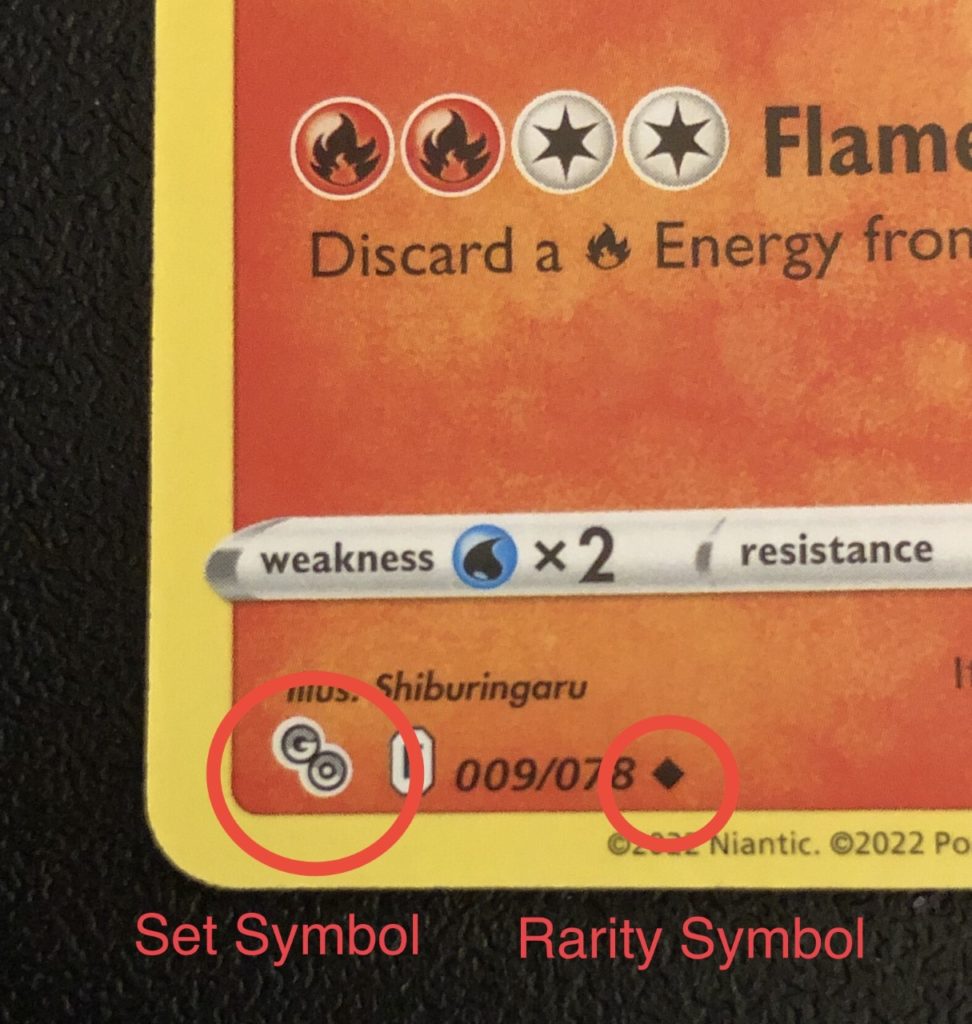
STEP 3- Put them in a binder
Organizing by set number means that you’ll want enough binder pockets for the whole set. You might also want space for the next or previous set as well.
Many cards will have a holo or reverse holo variant. In this case, the set number will remain the same. For example, the Spinarak card in the image below is numbered 007/078. Its reverse holo variant is also 007/078. It is up to the collector if they choose to include all variants in their binder. If you are seeking to own a complete master set, then it is common practice to include all variants.
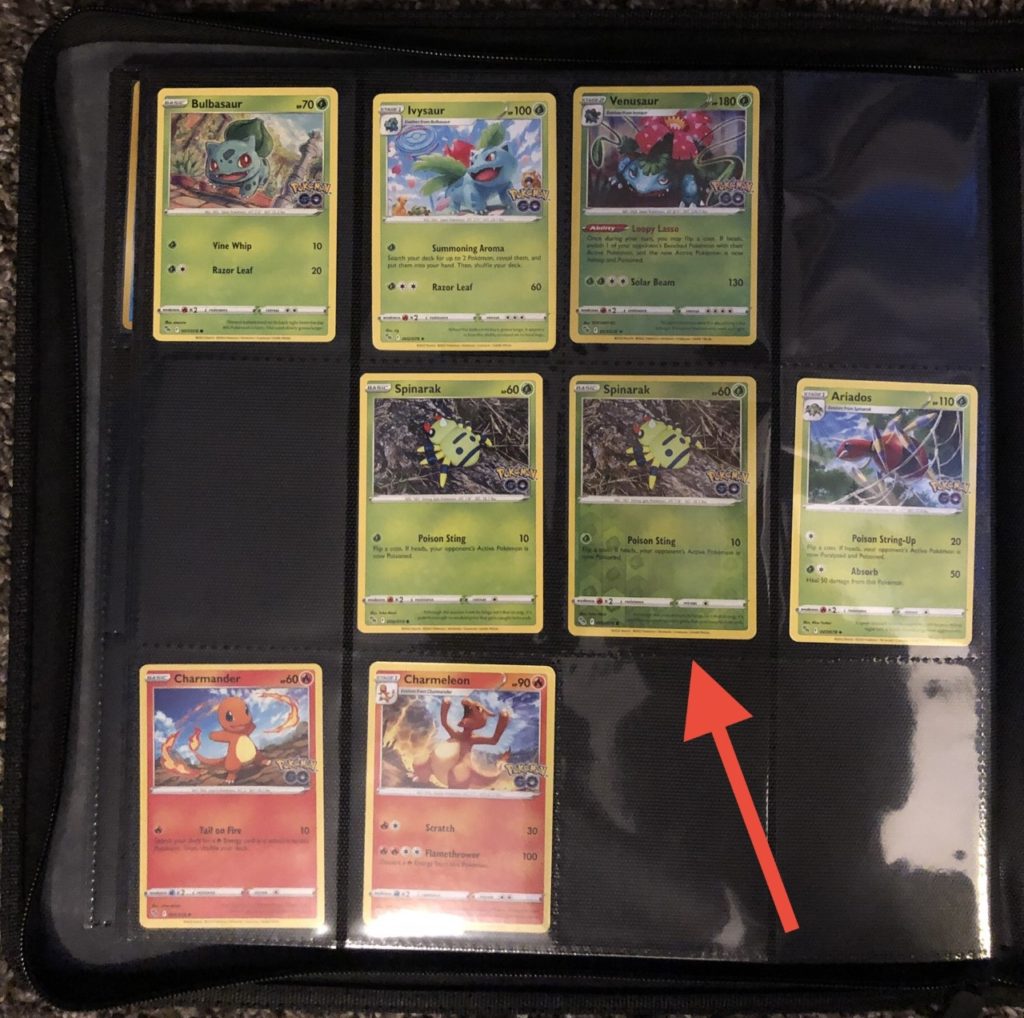
2. Organize by Rarity
Pros: The first page will have an impact, ideal for cards to trade, and rare cards are easy to locate.
Cons: Commons can be difficult to locate, and cards are out of chronological order.
STEP 1- Sort cards by rarity
On the bottom right (bottom left for newer cards) there will be a small symbol next to the set number. This is different from the set symbol and indicates the rarity.
Common | ● |
Uncommon | ♦ |
Rare | ★ |
Sometimes there will be symbols you don’t recognize. A radiant card has the rarity symbol “K” and amazing rare cards have an “A”. All of these special rarity symbols will be a tier higher than the regular rare (★) symbol.
Step 2- Put them in a binder
The most common reason to sort cards by rarity is a trade binder. This is a binder of cards that you are willing to trade. This is useful if you are traveling to a friend’s house, tournaments, school, or local card shops.
Most collectors will begin the binder with their biggest hits. This means that the rarest cards belong on the front page.
3. Organize by Type
Pros: Easy to locate specific cards, ideal for deck building, visually appealing
Cons: Cards across multiple expansions are mixed
Step 1- Sorting by type
Sorting by type is pretty straightforward, but there are a few tricks, too.
Some cards actually have two types. For example, delta species cards. In this case, you may choose to place them in their own section, or at the end of a section.
There are also cards that you will have a few of. Fairy-type cards are rare to come across and you’ll have significantly less than grass, fire, or water.
Within your type categories, you may also choose to sort between game mechanic types as well. For example, you will have a fire-type section, but you can create a sub-section within it for VMAX fire-type cards.
Step 2- Put them in a binder
You’re probably going to need a high-capacity binder for this method.
Another option is to purchase multiple binders and designate each to its own type. Remember to get an additional binder for all of the odds and ends that don’t quite fit into a regular type category, like dual-type cards.
Protecting Your Cards
Protecting your cards is the single most important thing that any card collector can do.
The most basic and actionable step is to sleeve your cards. This will protect them from edge wear, scratches, and moisture absorption.
It is common practice to sleeve your cards before inserting them into binder pockets. Furthermore, you may choose to store your cards in a box, on display, or in a frame. In this case, you can use top loaders, card savers, acrylic cases, or other methods of protecting your cards.
Check out our guide on How to Protect Your Pokémon Cards.
Final Thoughts
Truthfully, you can organize your Pokémon cards however you want. How and why you organize is probably going to come down to the type of person you are. People (like myself) who find organization relaxing and therapeutic will find their own way after hours of sorting.
But hey, you don’t have to organize all your cards. There are other options!

